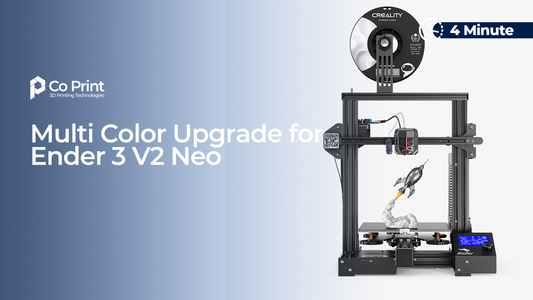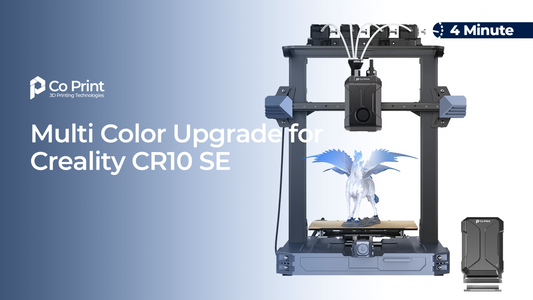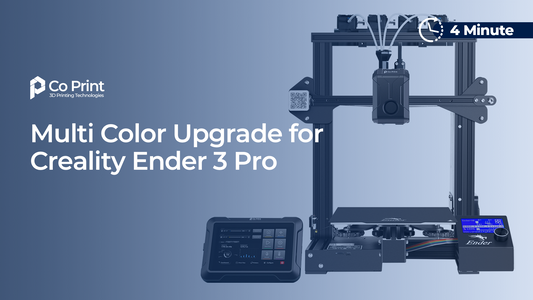With the development of 3D printing technology, slicer software used to make 3D models suitable for printers has become crucial. These software applications calculate each layer of a model, determining the path the printer will follow, and ultimately transform a digital design into a real object.
How Slicer Software Works:
Slicer software typically reads and processes file formats such as STL (Standard Triangle Language) to prepare a 3D model for printing. The STL file format represents the surface of a 3D model using triangles, which is a simple and effective way to express the geometric features of the model.
The information in the STL file is processed by the slicer software into layers and paths that the extruder will follow. During this process, each horizontal layer of the model is converted into G-Code commands, which include instructions for the printer's head, speed, movement, and material extrusion (a process used to create cross-sectional profiles of objects).
A good slicer is crucial for maximizing the performance of your 3D printer. If you use the right slicer and set it up correctly, you can achieve great results even with an ordinary 3D printer. However, if your slicer is inadequate or you fail to set it up properly, you may encounter faulty prints.
What Makes a Good Slicer?
Fast File Processing: Quickly processing complex 3D models increases efficiency and speeds up the production process.
Viewing Features: The model should be easily rotatable, zoomable, and all angles should be clearly visible.
Layer and Toolpath Optimization: The slicer should create the correct toolpaths for each layer, ensuring high print quality.
Flexible Settings Options: Users should be able to customize parameters such as layer height and fill density.
Error Detection and Correction: The slicer should automatically detect errors in the model and suggest solutions.
Support Structures: Effective support structures should be added for complex models, minimizing print errors.
Print Time and Material Estimates: The slicer should accurately predict print time and filament usage.
User-Friendly Interface: The interface should be clear and easy to use for both beginners and professional users.
G-Code Export: The slicer should export all the instructions for printing accurately and without errors.
Helpful Resources: The slicer should provide guides, support resources, and community forums.
So, which slicers are the best according to these criteria?
1)Cura
Cura is a user-friendly and open-source slicer software. Compatible with various 3D printers, it offers pre-configured profiles for many filament types. It provides advanced print settings and excellent support generation to minimize print errors. Users can continually optimize the software with regular updates and improvements. Its advanced functionality and powerful features make it suitable for a wide range of users, from beginners to professionals.
Free and Open Source: Allows users to use and customize the software for free. It is continually improved with community-developed plugins.
Wide Printer Compatibility: Supports a wide range of 3D printers, allowing users of different brands to print seamlessly.
Pre-configured Filament Profiles: Offers ready-made profiles for different filament types, allowing users to quickly select the correct settings.
Support Generation: Creates support structures for complex models, ensuring that difficult parts are supported during printing.
Regular Updates: Continuously updated with new features, bug fixes, and improvements to enhance the user experience.

2)OrcaSlicer
OrcaSlicer is a powerful slicer software that has gained popularity among 3D printer users. It is known for its user-friendly interface and speed. It offers strong support structures for printing complex models and has wide compatibility with multiple printers. It is an ideal choice for both professional users and beginners. It provides comprehensive customization options for high-quality prints and advanced print settings.
Speed: Offers fast processing for large projects, processing the model quickly based on its complexity and saving time.
Advanced Print Settings: Allows in-depth adjustment of parameters such as layer height, speed, temperature, and others, customizing print quality.
Support and Configuration: Provides strong support structures for complex models, which is particularly advantageous for challenging projects.
Modular Design: Custom profiles can be created for different printers and filament types, offering versatility. OrcaSlicer’s modular design makes it easy to tailor the software to specific printing needs, ensuring optimal performance for various setups.
Multi-Color Printing: OrcaSlicer supports multi-color printing, and when used with Co Print, users can efficiently manage and implement multiple colors in their projects. Co Print’s integration within OrcaSlicer simplifies the process of color management, allowing users to work with vibrant, multi-material designs seamlessly.

3) Bambu Studio
Bambu Studio is a powerful slicer software designed specifically for Bambu Labs 3D printers but is also compatible with other printer brands. Its user-friendly interface offers advanced features such as detailed pre-print previews and adaptive slicing. With fast slicing times and high print quality, it also features unique tools such as cloud connectivity and print management. It is suitable for both beginners and professional users.
Fast Slicing: Provides fast slicing operations, ensuring that large projects are processed quickly and efficiently.
Advanced Print Settings: Offers in-depth customization for parameters such as print speed, temperature, and more, maintaining high print quality.
Support and Configuration: Creates strong support structures for complex models, preventing print failures in difficult projects.
Modular Design: Offers broad compatibility with custom profiles for different printers and filament type

4)PrusaSlicer
PrusaSlicer is a powerful slicer software optimized for Prusa printers but is also compatible with many other 3D printers. It offers advanced print settings that allow users to control print quality. With automatic error correction and advanced support structures, it minimizes print errors. It also provides custom printer settings, enabling more complex projects.
Advanced Print Settings: Allows users to adjust every detail from print speed to temperature settings, achieving higher-quality and customized prints.
Automatic Model Error Correction: Detects potential errors in 3D models and provides tools for fixing them, reducing the risk of failure and minimizing unsuccessful prints.
Regular Updates: The software is constantly updated, with new features added to evolve with user needs, offering the latest functionality.
Multilingual Support: Offers various language options for users from around the world.

5)Simplify3D
Simplify3D is a powerful and flexible slicer software designed for professional 3D printer users. It gives users full control over every stage of the printing process. It is compatible with different printers and material types, ensuring high-quality prints even for challenging projects. Its advanced features allow users to customize print speed, temperature settings, and support structures in detail.
Customization Options: Provides the ability to customize every aspect of printing, from speed to temperature settings, ensuring the best quality for each print.
Preview Feature: Offers detailed previews before printing to prevent potential issues.
Reliable Support Structures: Creates reliable support structures for complex models, preventing failed prints.
User-Friendly Interface: Provides a simple and clear interface, ensuring that users can efficiently use the software while benefiting from its powerful features.

Choosing the right slicer software is a factor that directly impacts 3D print quality and efficiency. Open-source software like Cura and PrusaSlicer caters to a broad user base, while Simplify3D offers advanced customization for professionals. OrcaSlicer and Bambu Studio stand out for their speed and support structures. To achieve successful print results, the software should be selected based on your use case and needs. By choosing the right software for your needs, you can enhance the quality and efficiency of your printing processes. You can also achieve more colorful, durable, and precise prints by integrating Co Print's multi-filament technology with your slicer software.




